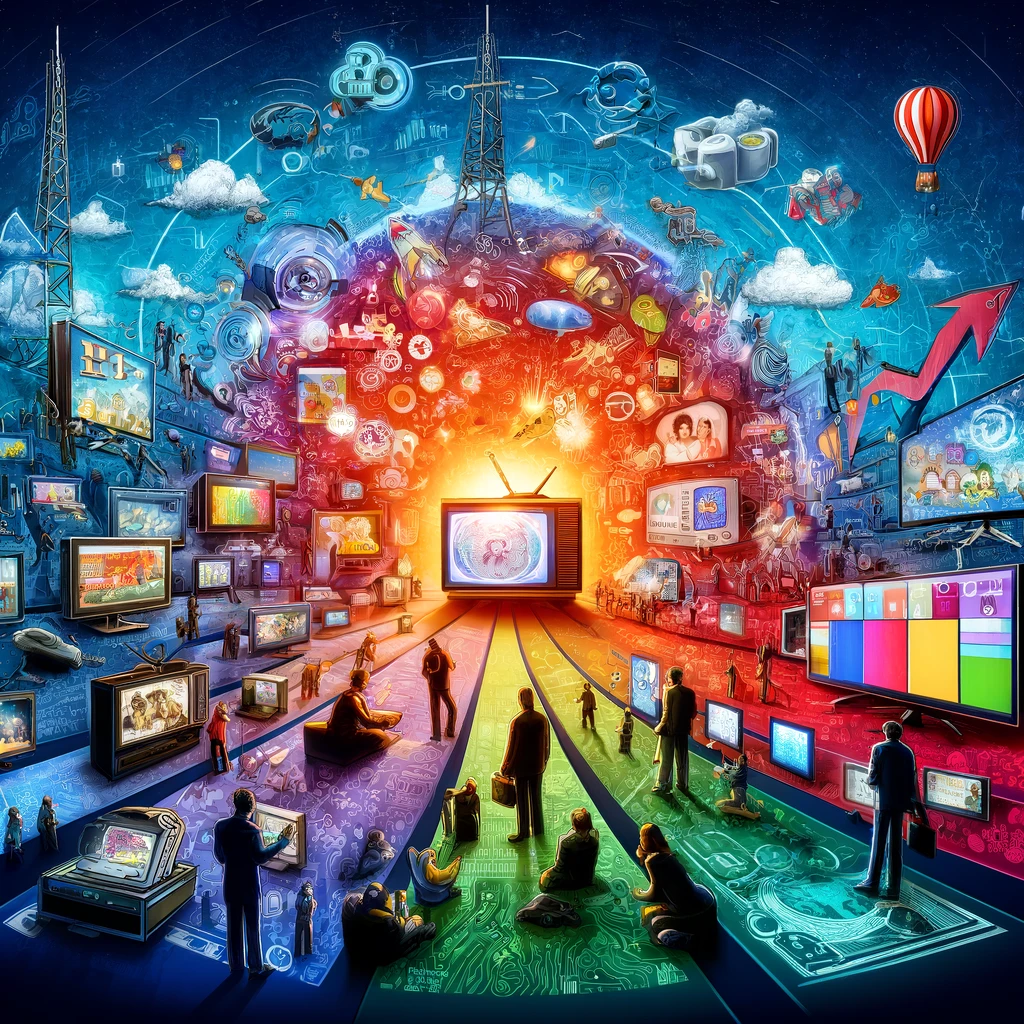In the ever-evolving landscape of television, the emergence of Internet Protocol Television (IPTV) has marked a significant turning point, redefining what it means to broadcast and consume TV channels. Gone are the days when viewers were tethered to the schedules and limitations of traditional television. The advent of IPTV has ushered in an era of unparalleled flexibility, variety, and interactivity, transforming TV channels from static entities into dynamic portals of entertainment, education, and engagement.
The Traditional TV Paradigm
To appreciate the revolution IPTV represents, it's essential to consider the traditional TV paradigm. Historically, TV channels were distributed through terrestrial, satellite, or cable transmissions, reaching audiences in a linear, scheduled format. This model, while revolutionary in its time, imposed constraints on viewers, limiting their choice to the channels available in their region and the programming scheduled by broadcasters.
Enter IPTV: A New Horizon
IPTV represents a paradigm shift, leveraging the internet to deliver TV channels and content. This technology enables a direct, on-demand connection between content providers and viewers, breaking down the geographical and temporal barriers that once defined television.
Personalized Viewing Experience: IPTV allows users to curate their viewing experience, selecting from an expansive array of channels and content that cater to their interests, schedules, and viewing preferences.
Global Reach, Local Content: With IPTV, viewers can access a global selection of TV channels, from international news and sports to niche cultural programming, all while still enjoying local content.
Interactivity and Engagement: Beyond passive viewing, IPTV offers interactive features such as voting, shopping, and social sharing directly through the TV interface, enhancing viewer engagement.
The IPTV Ecosystem
The IPTV ecosystem comprises various stakeholders, including content creators, broadcasters, IPTV service providers, and viewers. This ecosystem facilitates a more collaborative and dynamic approach to television, where feedback loops and data analytics enable continuous improvement and personalization of content and viewing experiences.
Content Creators and Broadcasters: In the IPTV model, traditional and new-age content creators can distribute their channels and programming more freely, reaching wider, more targeted audiences.
IPTV Service Providers: These entities curate and deliver content through IPTV platforms, offering packages that include live TV, VOD, and interactive services. They play a crucial role in shaping the IPTV experience, ensuring quality, variety, and accessibility.
Viewers: The ultimate beneficiaries of IPTV, viewers enjoy unprecedented control over their television experience, accessing content when and how they want, on a variety of devices.
The Impact on Traditional TV Channels
The rise of IPTV has compelled traditional TV channels to adapt, embracing digital platforms to meet viewer expectations. Many established channels now offer digital counterparts, streaming live and on-demand content through IPTV services to remain relevant and competitive.
Challenges and Opportunities
The transition to IPTV is not without challenges. Issues such as bandwidth limitations, copyright restrictions, and the digital divide pose obstacles to universal IPTV adoption. However, these challenges are matched by opportunities for innovation, such as the development of more efficient streaming technologies, the creation of new content distribution models, and initiatives to bridge the digital divide.
Looking Ahead: The Future of TV Channels in the IPTV Era
As IPTV continues to mature, the future of TV channels looks increasingly diverse, personalized, and interactive. Emerging technologies like 5G, artificial intelligence, and virtual reality promise to further enhance the IPTV experience, offering:
-
Ultra-High-Definition Streaming: With advancements in network technology, viewers can expect even higher quality video, with 4K and 8K streaming becoming the norm.
-
Enhanced Personalization: AI-driven recommendations will become more accurate, providing viewers with content tailored to their preferences and viewing habits.
-
Immersive Experiences: The integration of VR and AR with IPTV could revolutionize storytelling, offering immersive viewing experiences that blur the lines between reality and entertainment.
Conclusion
The integration of IPTV has fundamentally transformed TV channels, shifting the landscape of television from a broadcast-centered model to a viewer-centered experience. This evolution reflects broader changes in technology and society, emphasizing personalization, interactivity, and accessibility. As we look to the future, the potential of IPTV to further revolutionize television is boundless, promising a viewing experience that is more engaging, inclusive, and immersive than ever before. In the age of IPTV, television is not just watched; it's experienced, shaping a new era of digital entertainment that transcends traditional boundaries and opens up new worlds of possibility.


No comments yet